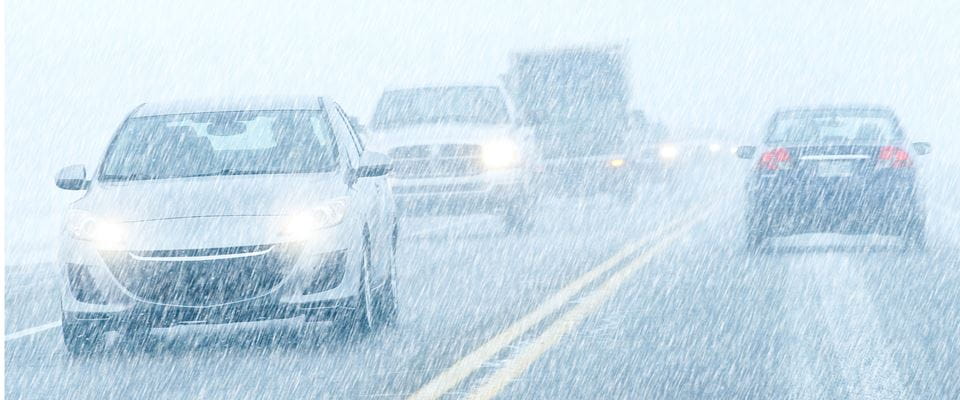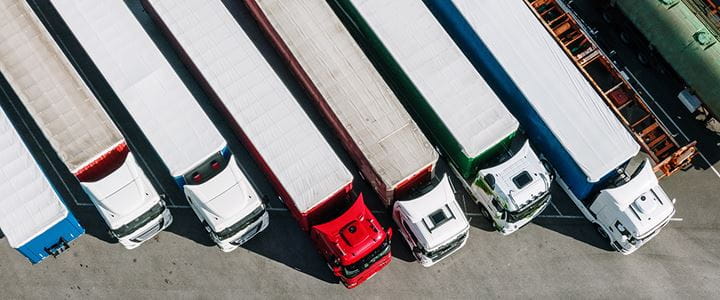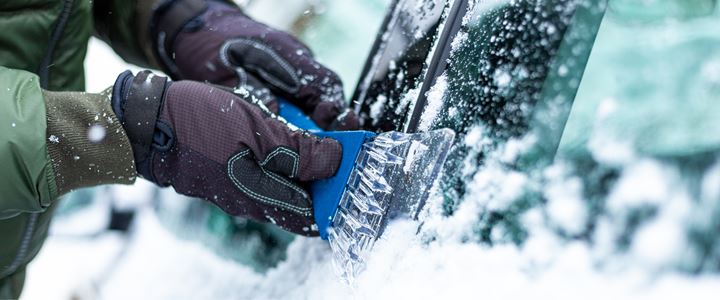Did you know road accidents are more likely to happen in summer?1 The reason for this is simple: there are more people on the roads, particularly during peak summer months when we pack up our cars for UK-based holidays.
However, the winter months are the ones with the most hazardous driving conditions. Ice, snow, fog, rain and darkness all play a part in making every journey more difficult. There may be fewer of us on the roads, but we need to adapt our driving accordingly to ensure that we all stay safe.
Always adjust your driving according to the conditions
It is illegal to drive with any ice or snow on your windscreen that obstructs your windscreen as it breaks the Highway Code Rule 229. Drivers could be fined up to £2,500 for driving with an obstructed windscreen, be banned from driving, and get three penalty points for driving a vehicle in a dangerous condition.2
Slow down
Allow more time for your journeys, slow your speed and keep your distance. Stopping times are reduced in winter, so you need to ensure you don't skid into the back of someone's car. The easiest way to do this is to simply back off. When driving in icy or snowy weather drive with care, even if the roads have been treated, they may look fine even when they are not.
Up your gears
Drive at slow speed and in as highest gear as possible allows you to keep more control of your vehicle. If it's icy and you're struggling to get started, try pulling away in second gear. This should make it easier to get you going – pulling away in first gear on ice won't give you much grip.
Dealing with skids
Icy conditions can lead to skids, even if you are driving carefully. If you lose control of the car, keep both hands on the wheel and avoid the instinct to hit the brakes. You should also try to steer into the skid – this should help get you straight and back on track. Keep calm, which can be easier said than done.
Breaking distance
Leaving enough distance between you and the car in front will give you a better view of the road ahead. Let you react and stop in time if cars ahead suddenly brake. When driving in conditions of ice and snow the Highway Code rule 230 advises keep well back from the road user in front as stopping distances can be 10 times higher than on a dry road.3
Coping with the hills
If you are driving uphill, leave plenty of room between other cars or wait until it's clear so you don't have to stop part way up. Keep a constant speed and try to avoid having to change gear on the gradient. Going downhill requires a low gear, again leaving as much room as possible so that you don't have to keep applying pressure on the brakes.
Be aware of noises
In winter, your battery is under extra pressure, so listen out as you start the vehicle and use the starter in short bursts to avoid more stress. Continuous squealing noises when you start up could mean that the water pump is frozen and the fan belt is slipping on the pulley. Stop the engine straight away and let it thaw out. If your car overheats a few miles from home, it's likely that the radiator has frozen. Stop straight away, so you don't cause more severe damage. A full service and keeping your car covered or in garage if possible is recommended.
Don't drive whilst tired
Dark roads, the distracting effect of car and street lights and harsher weather will all make driving a bit more challenging at this time of year. Don't add to the risk by driving if you are tired. Only take long car journeys when necessary and ensure you are up to date with your insurance, your vehicle services checks - and listen to all route traffic reports so that you are prepared.
As the nights draw in and the temperature drops, you need to make sure you are ready. Simple changes to driving habits – mainly slowing down – will mean our roads can stay safer over the winter months.
Sources
1 https://www.petrolprices.com/news/serious-driving-accidents-summer-not-winter/
2 https://www.gov.uk/check-vehicle-safe
3 https://www.highwaycodeuk.co.uk/icy-and-snowy-weather.html











